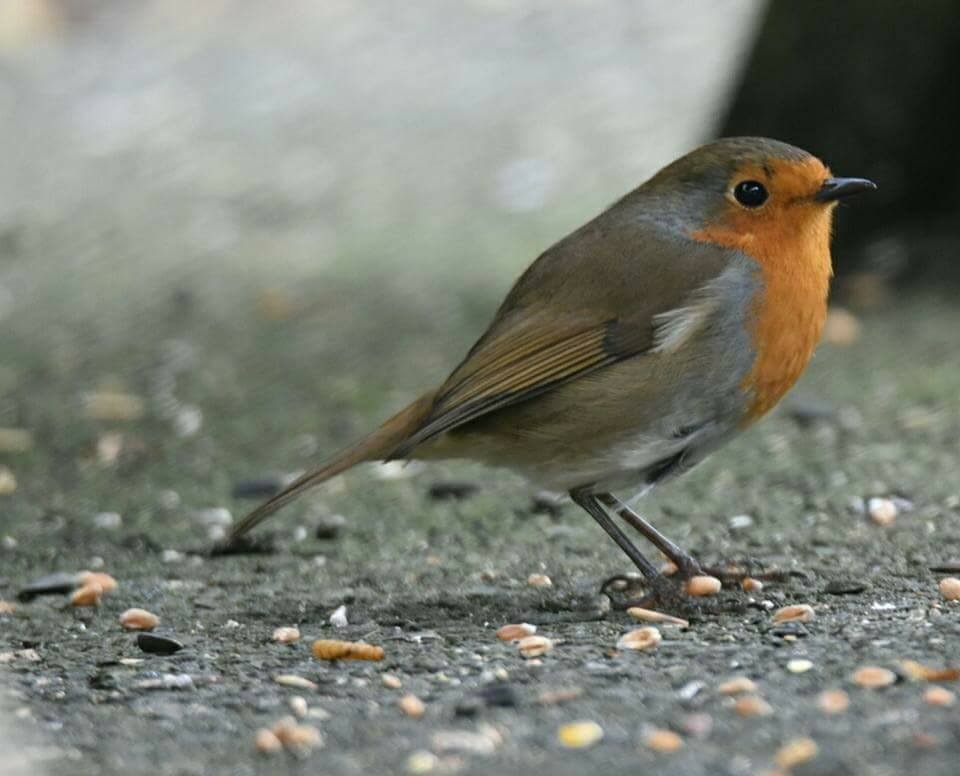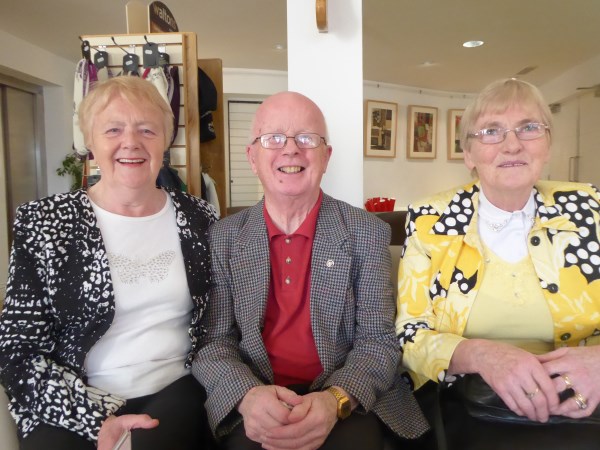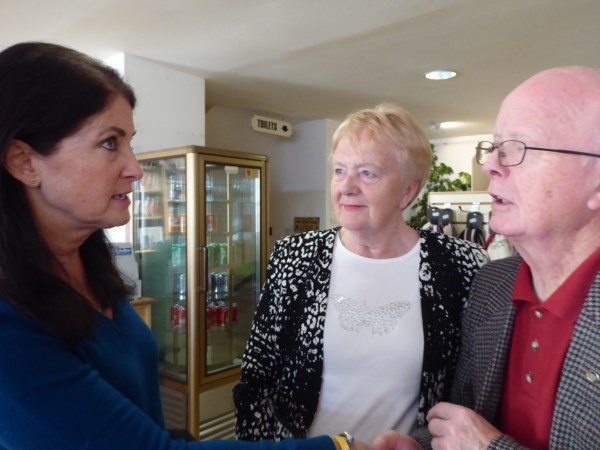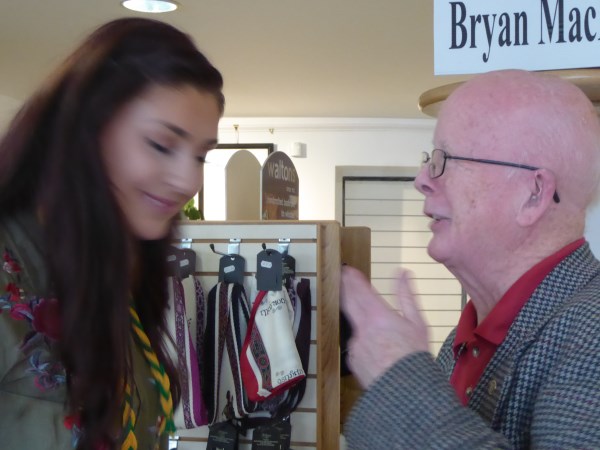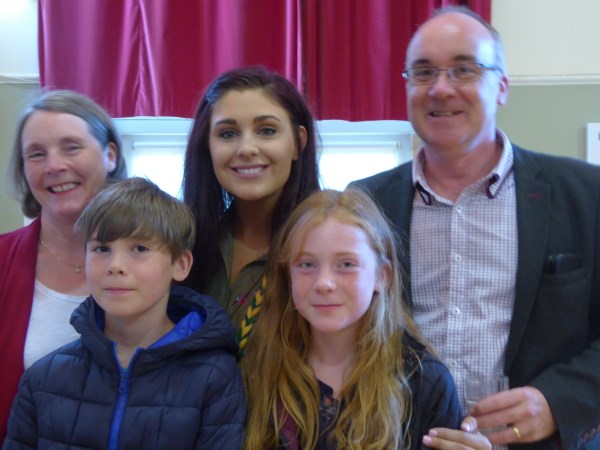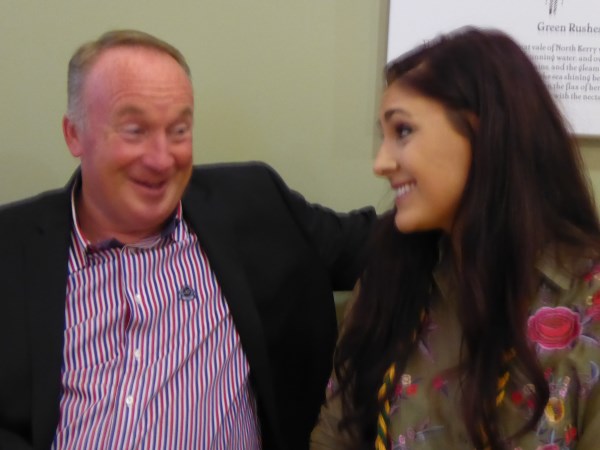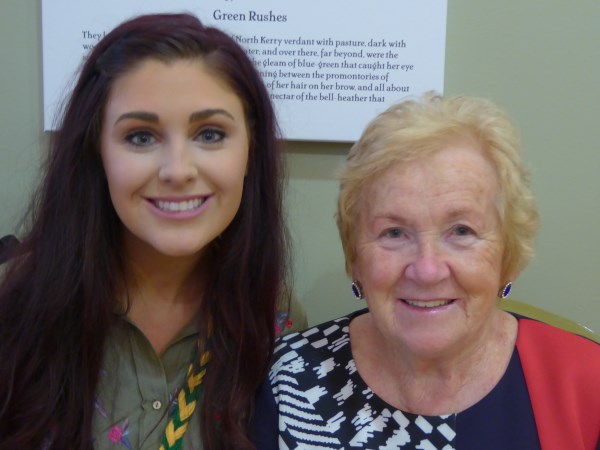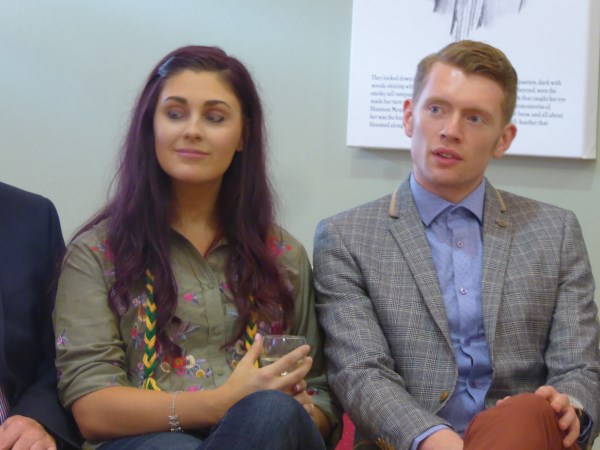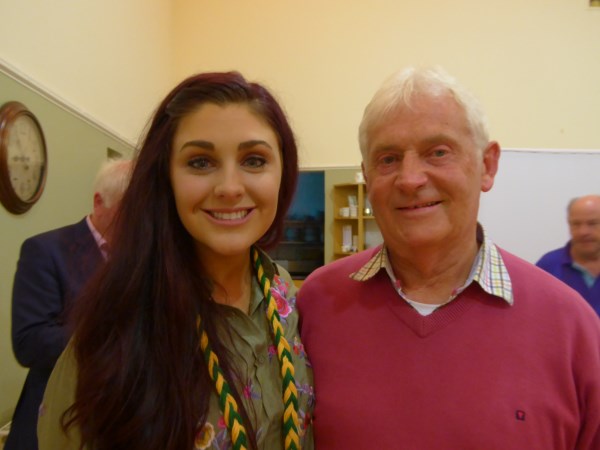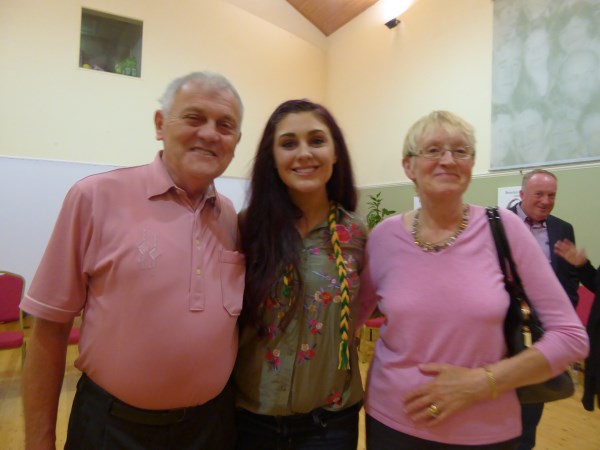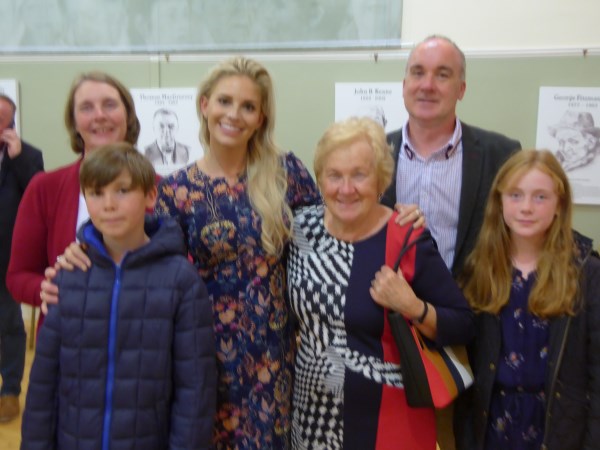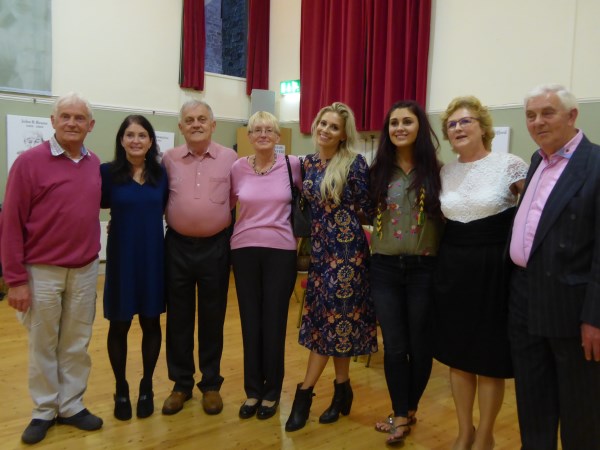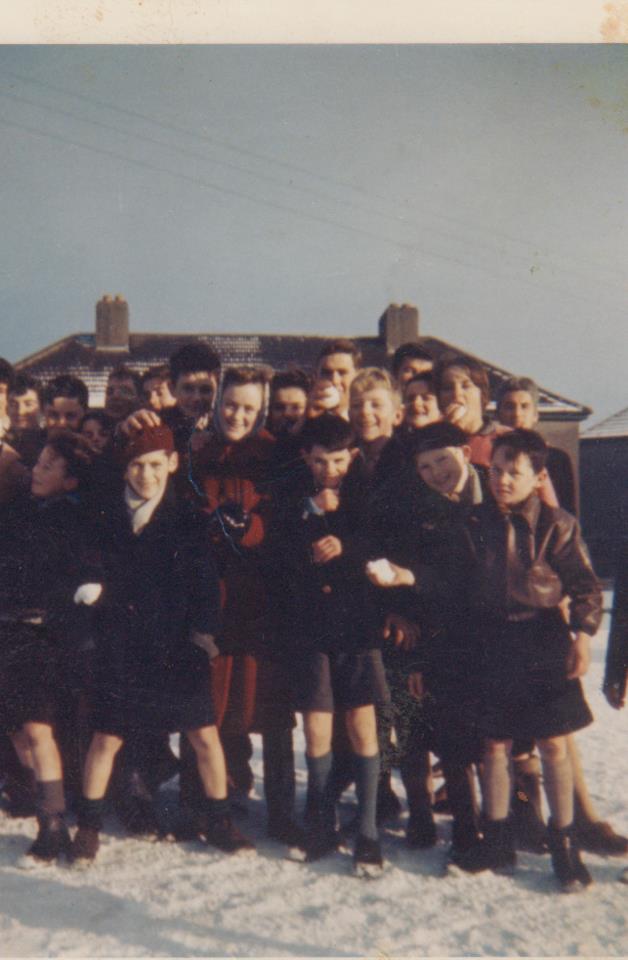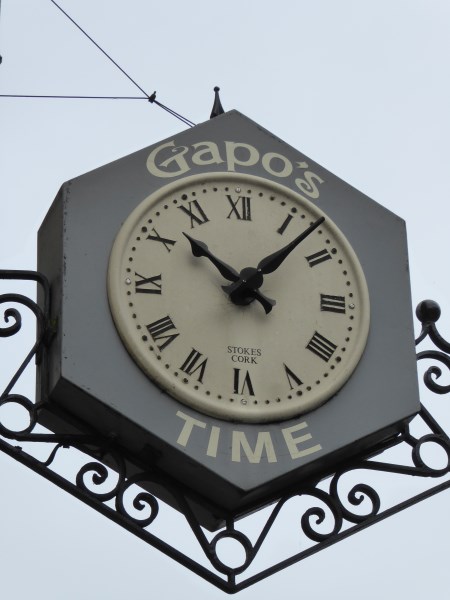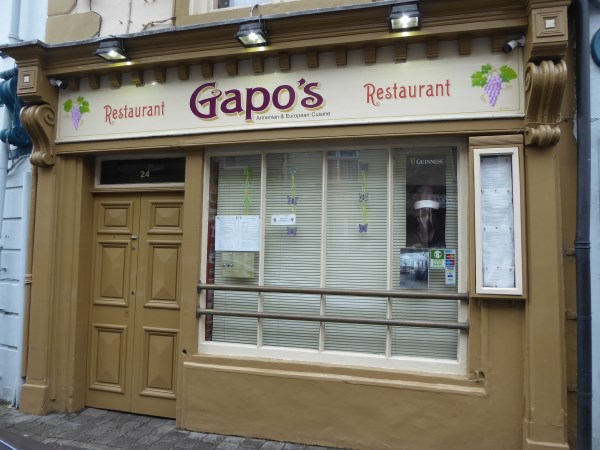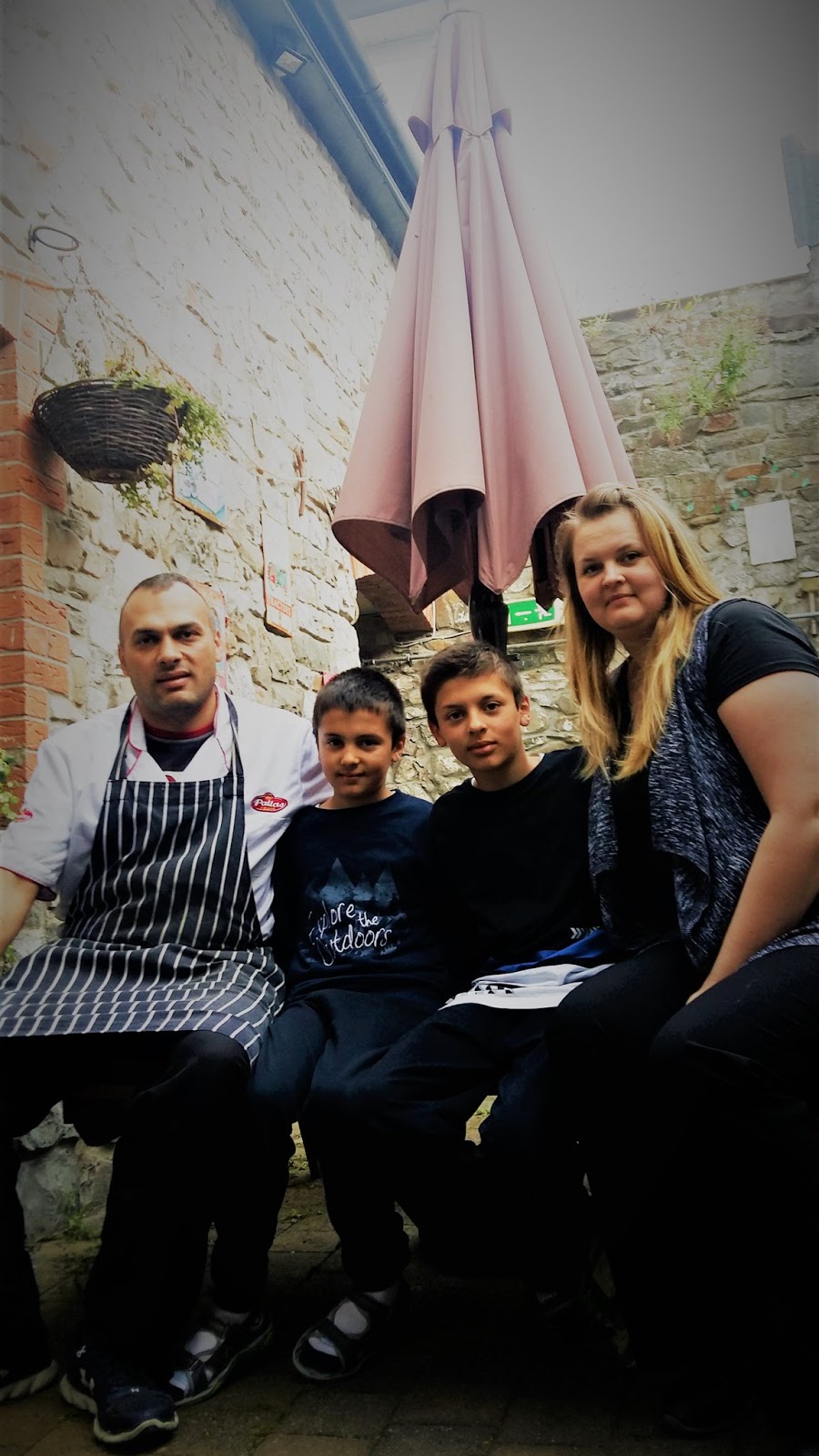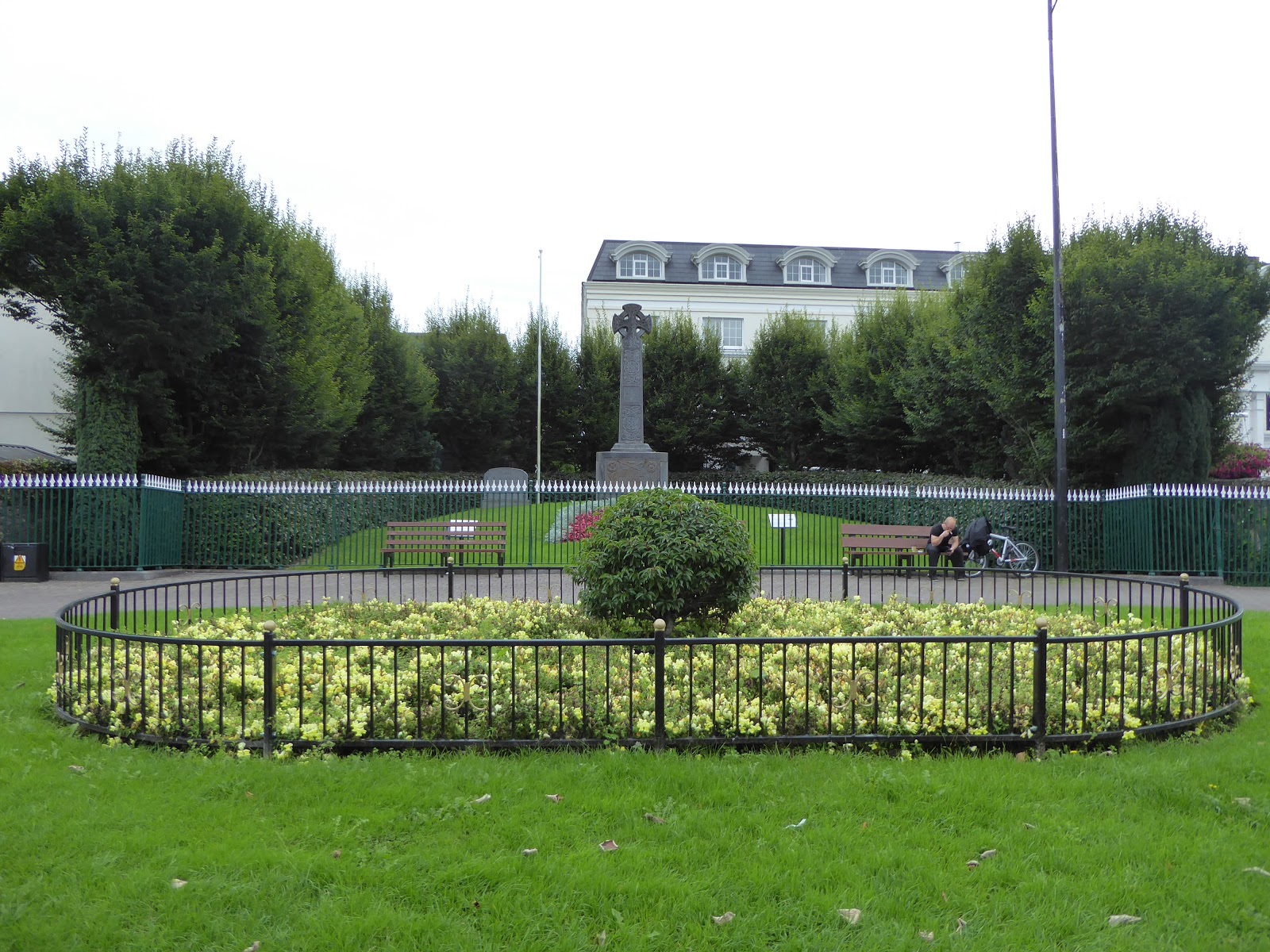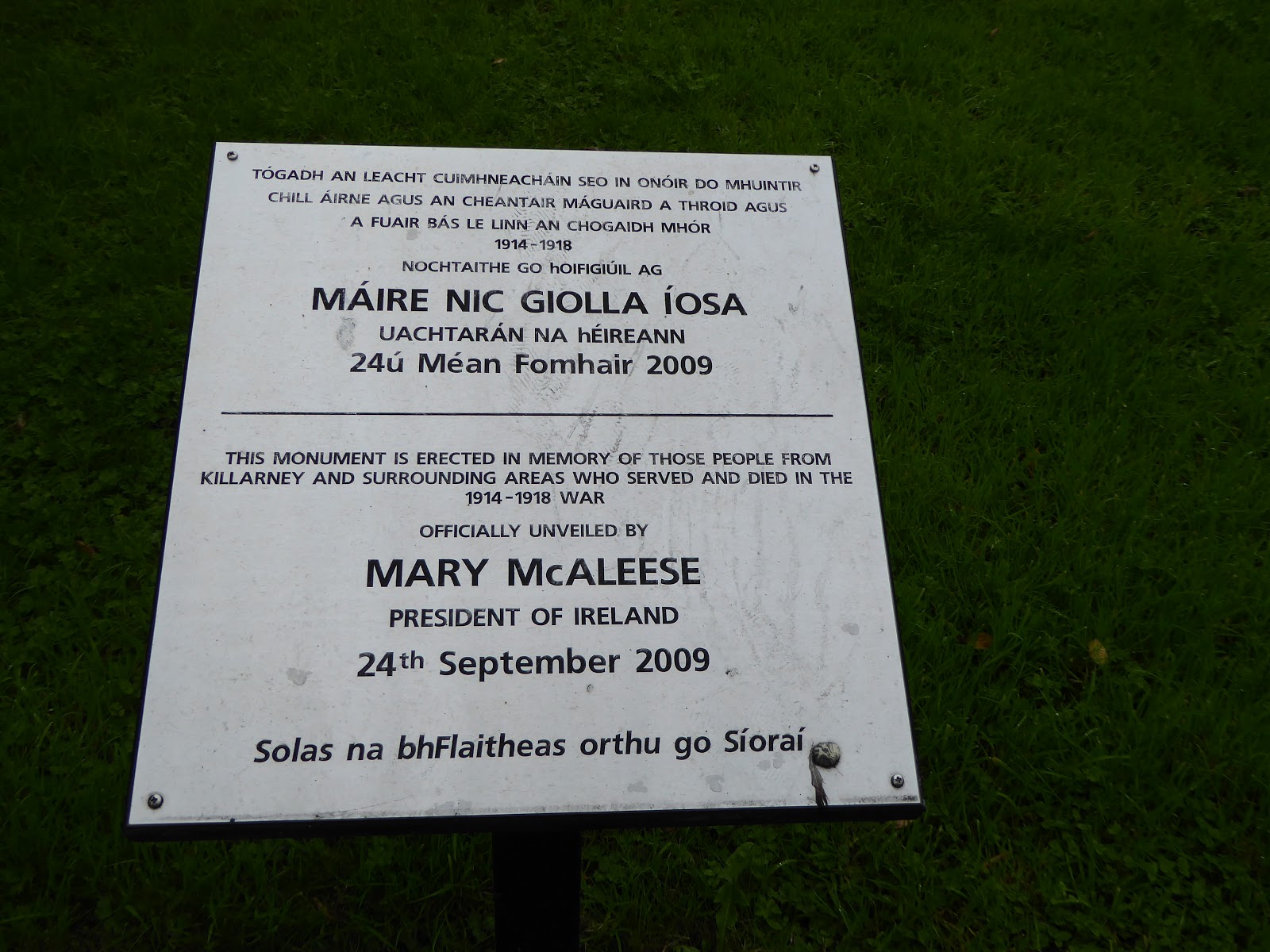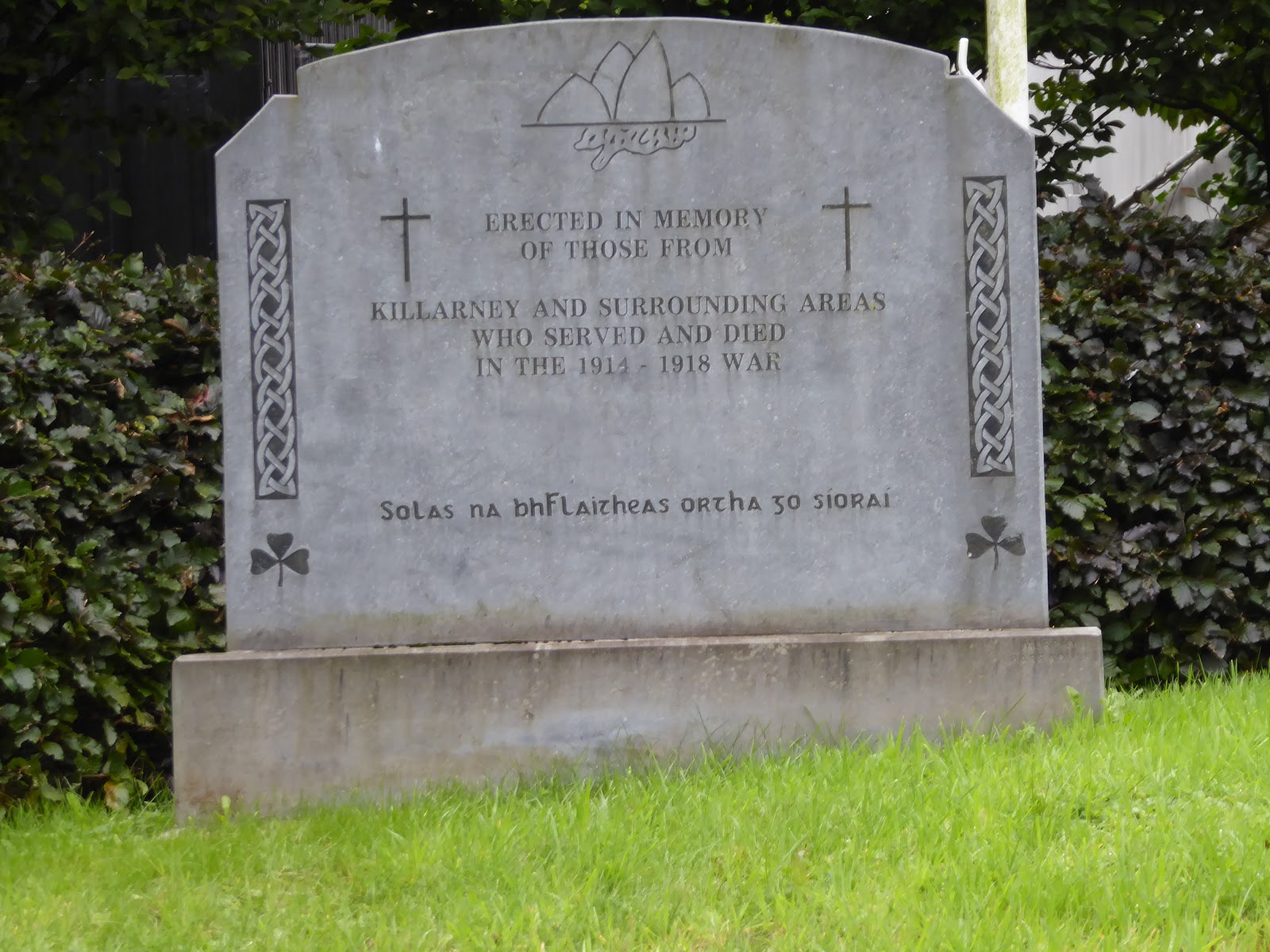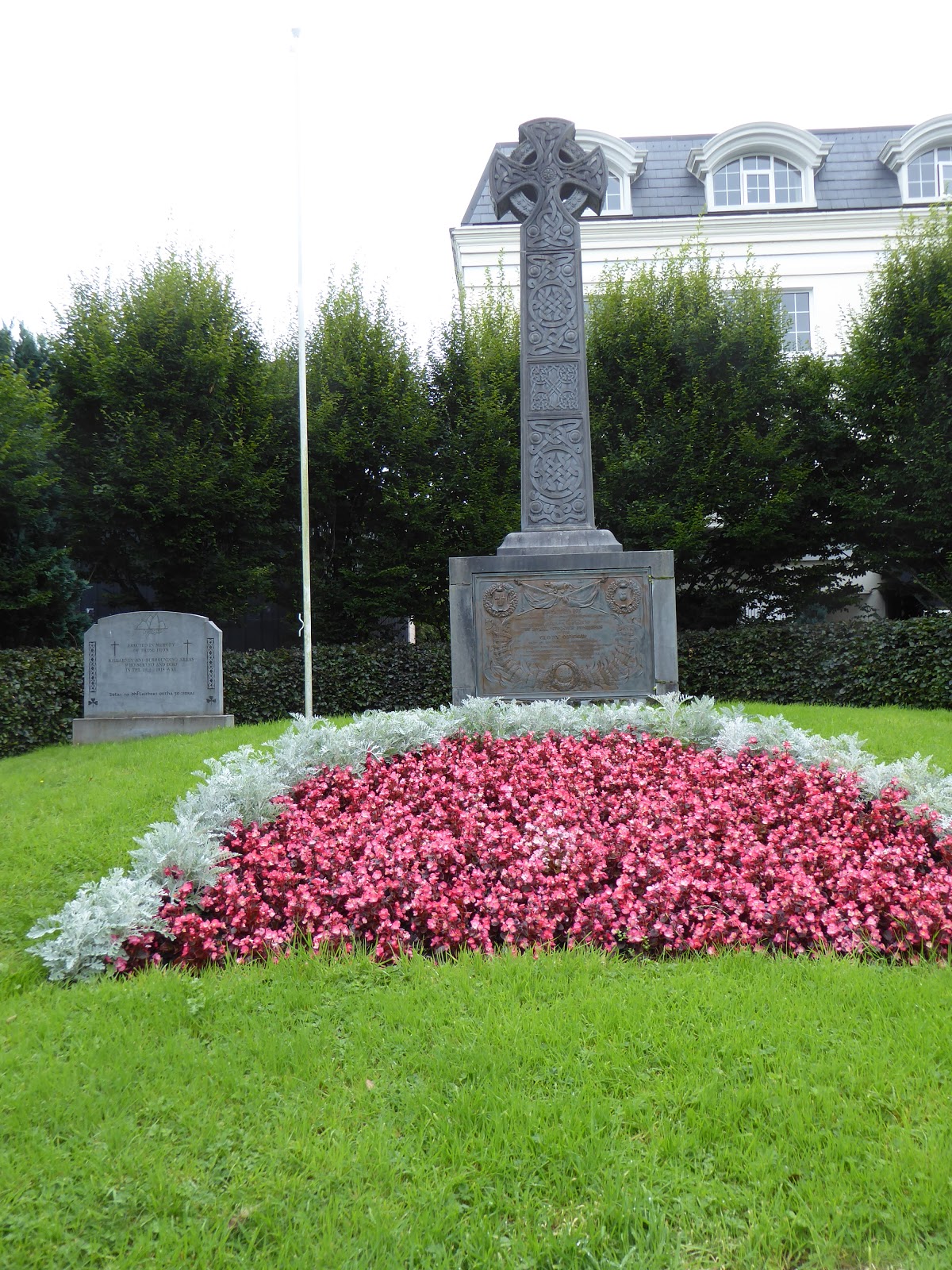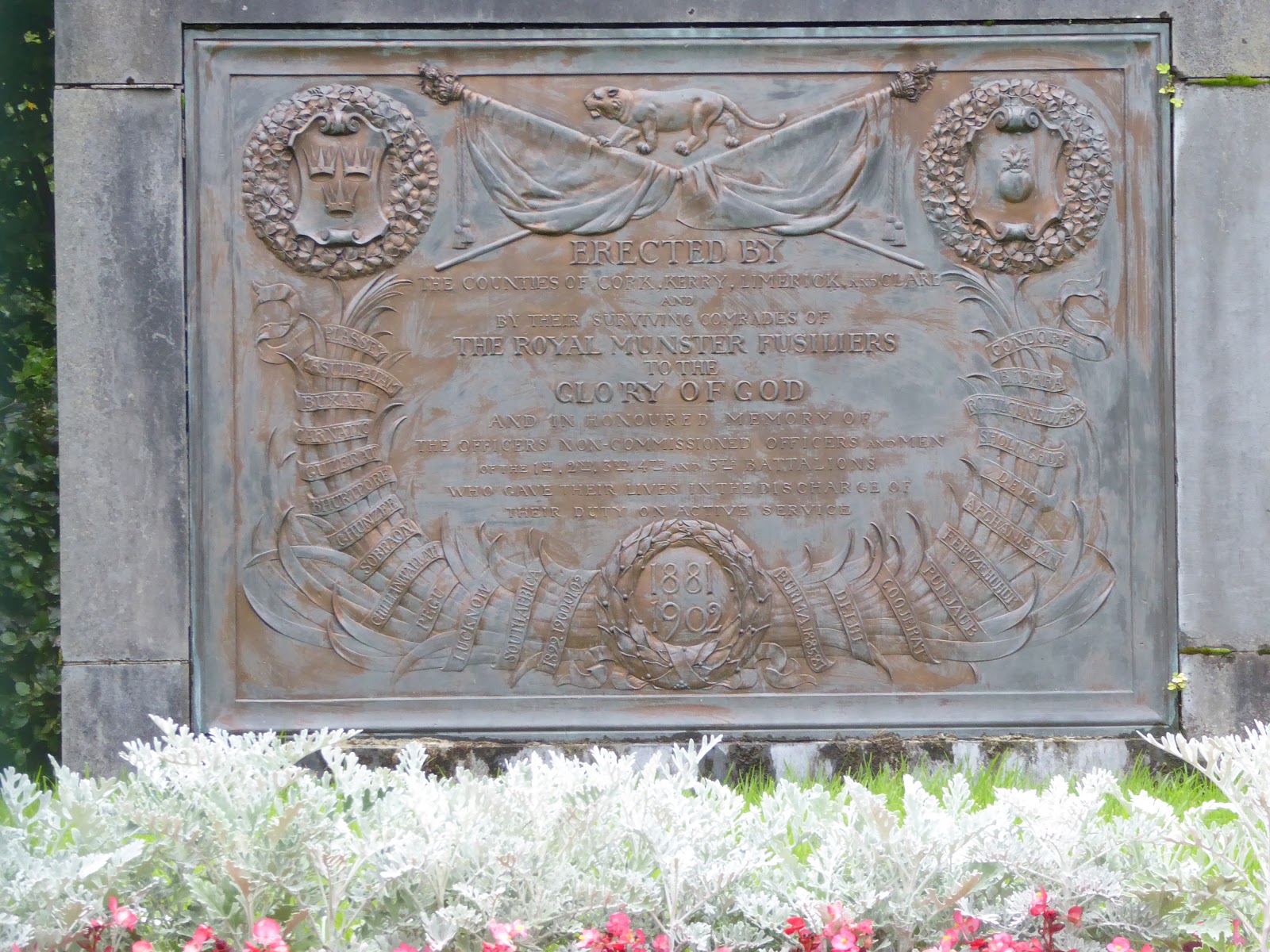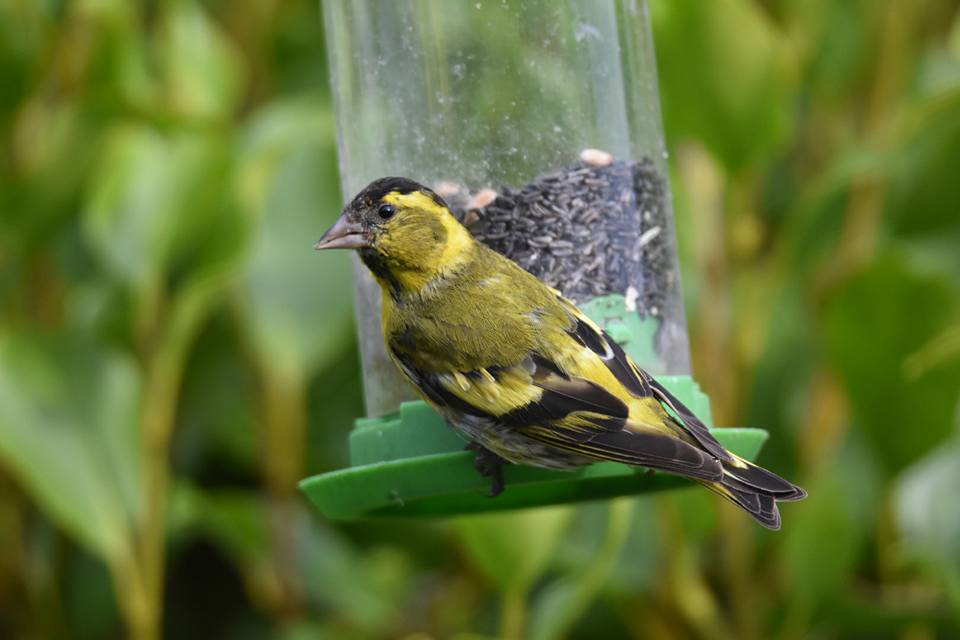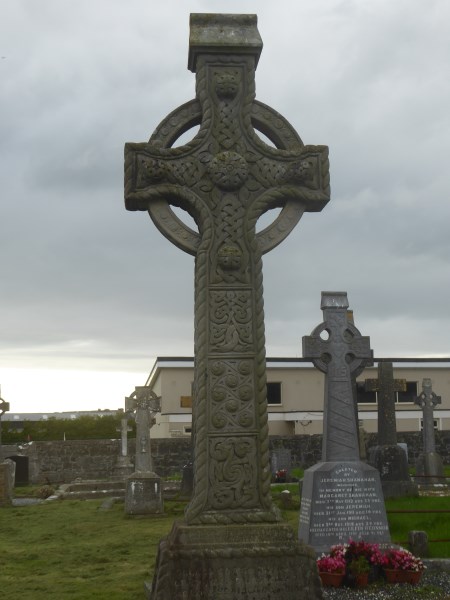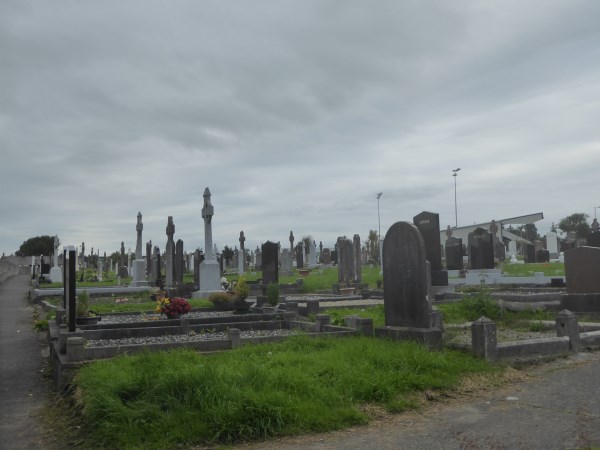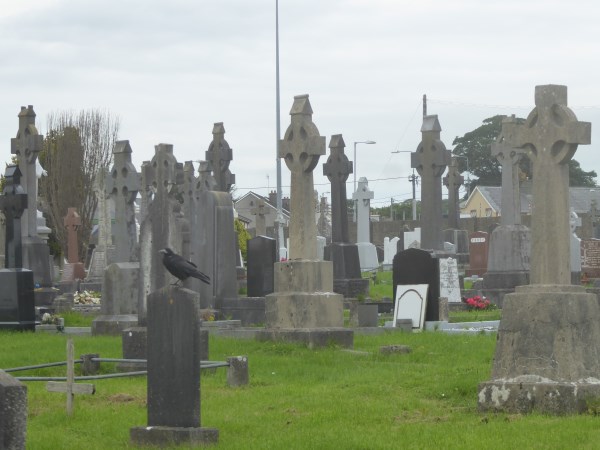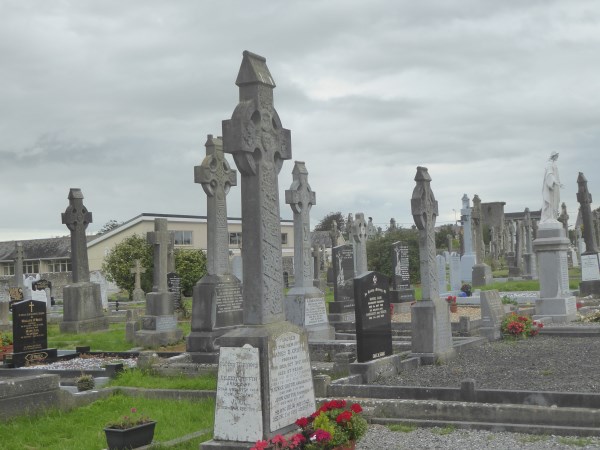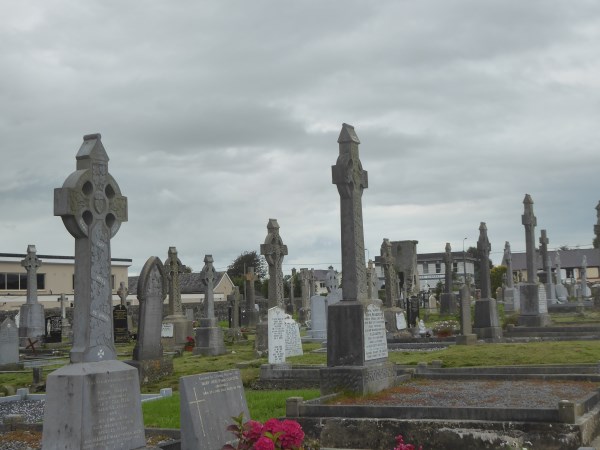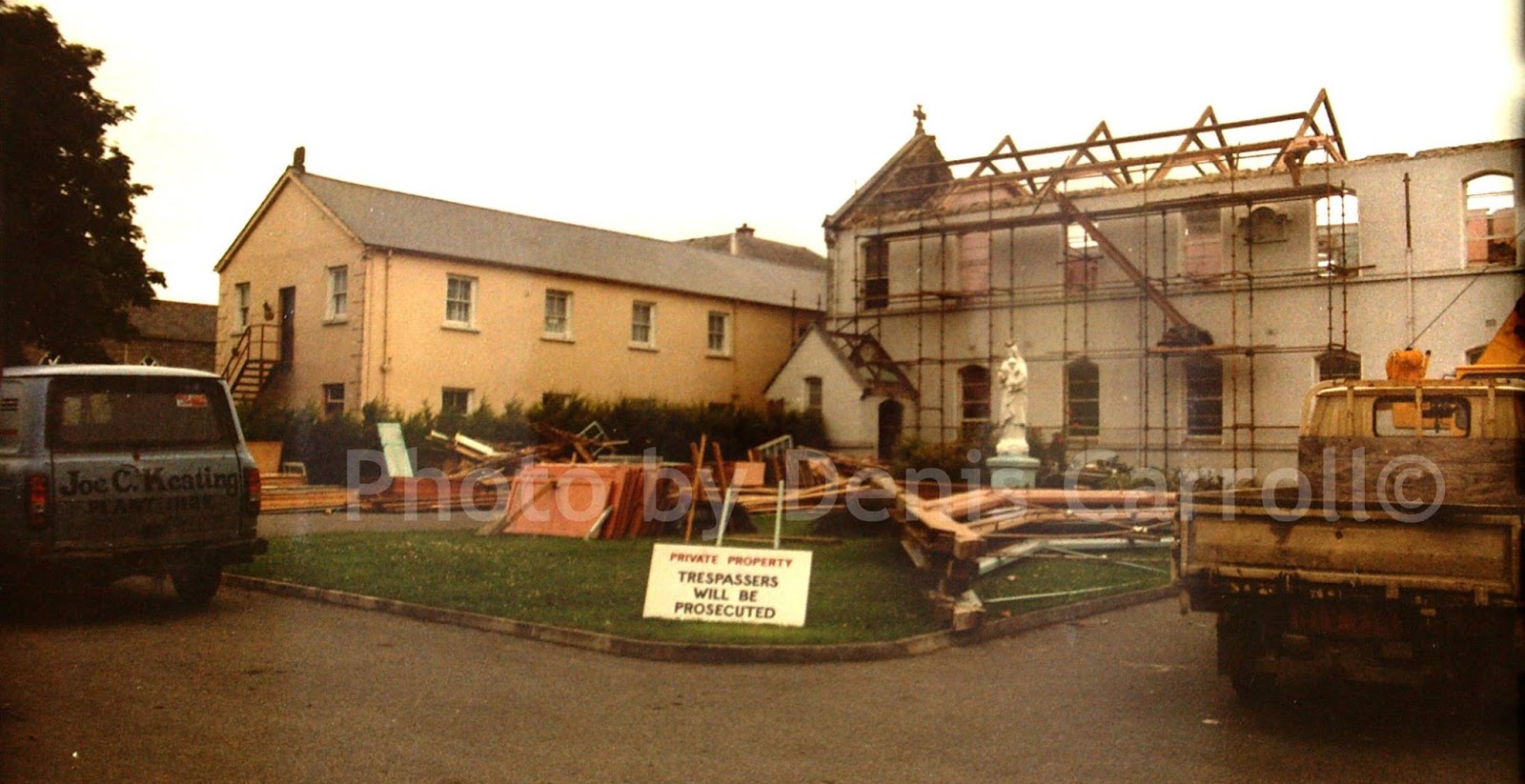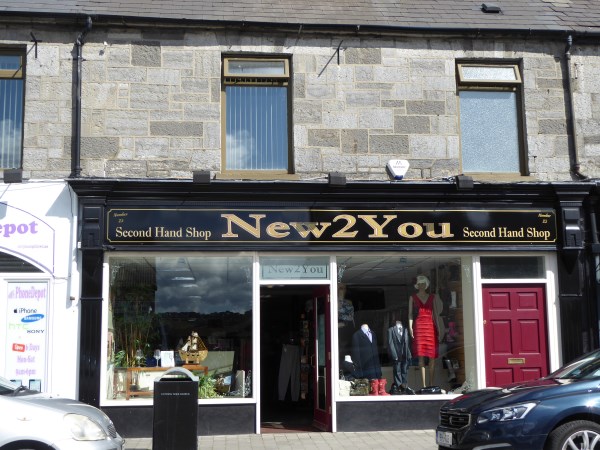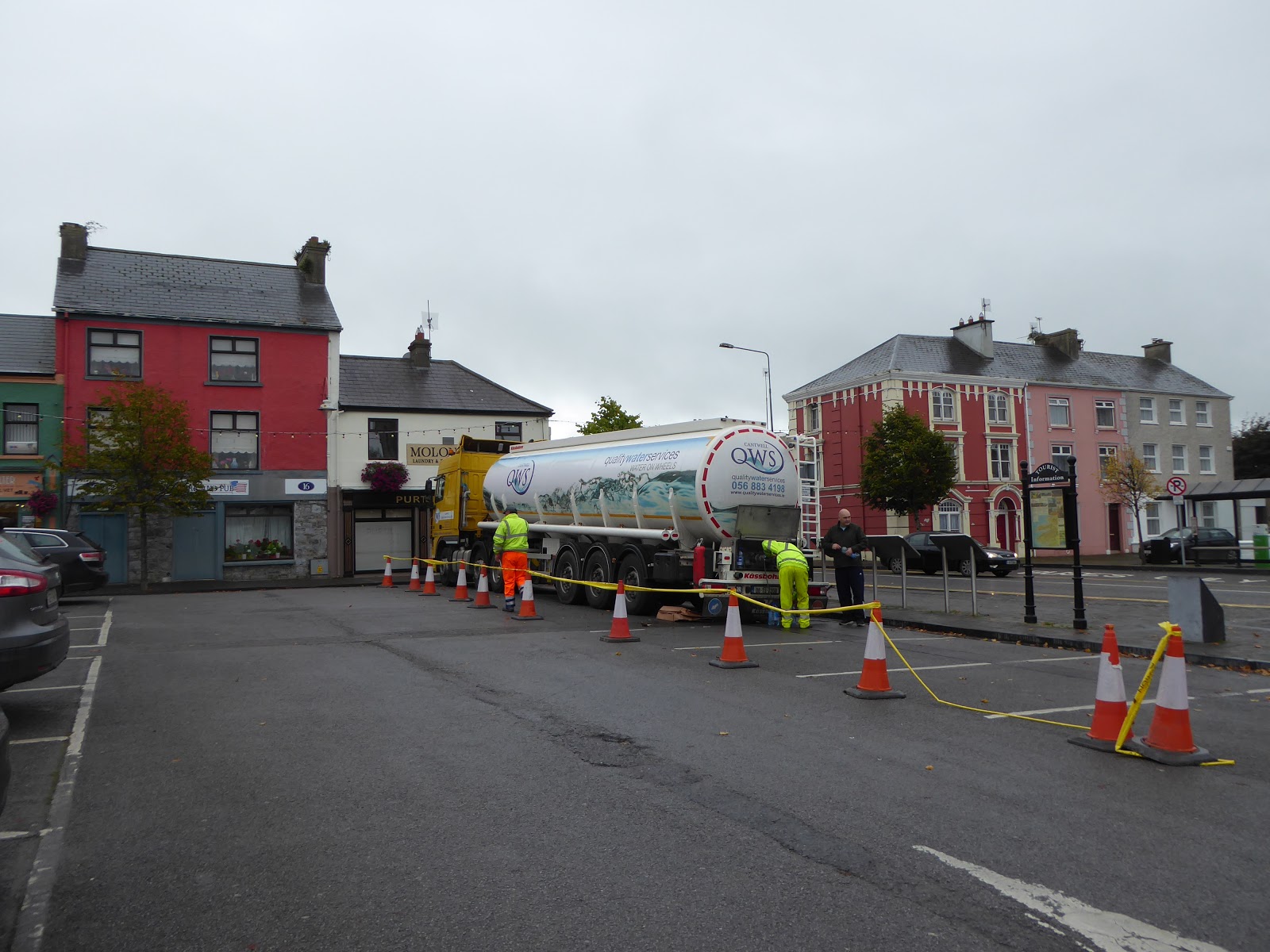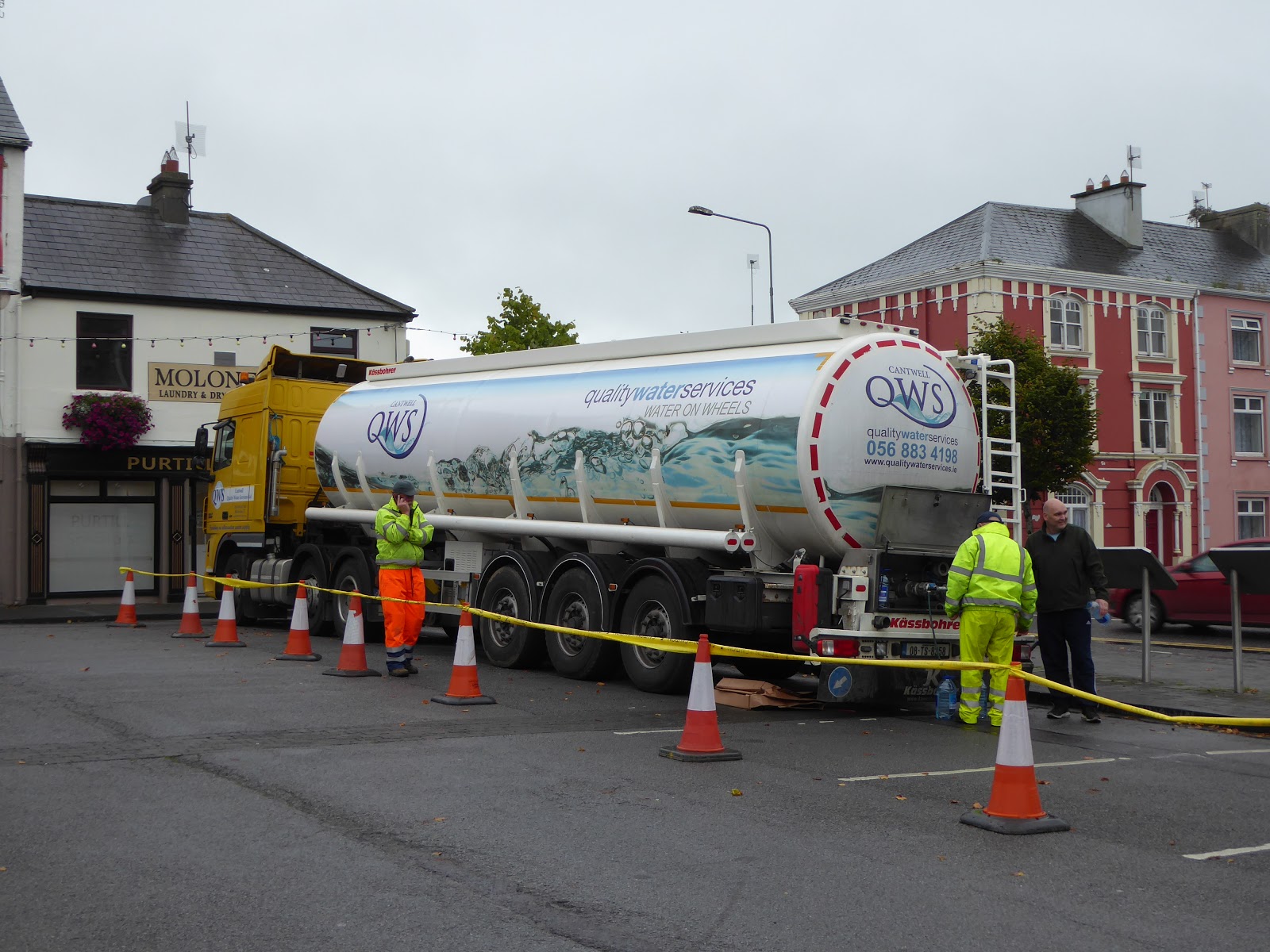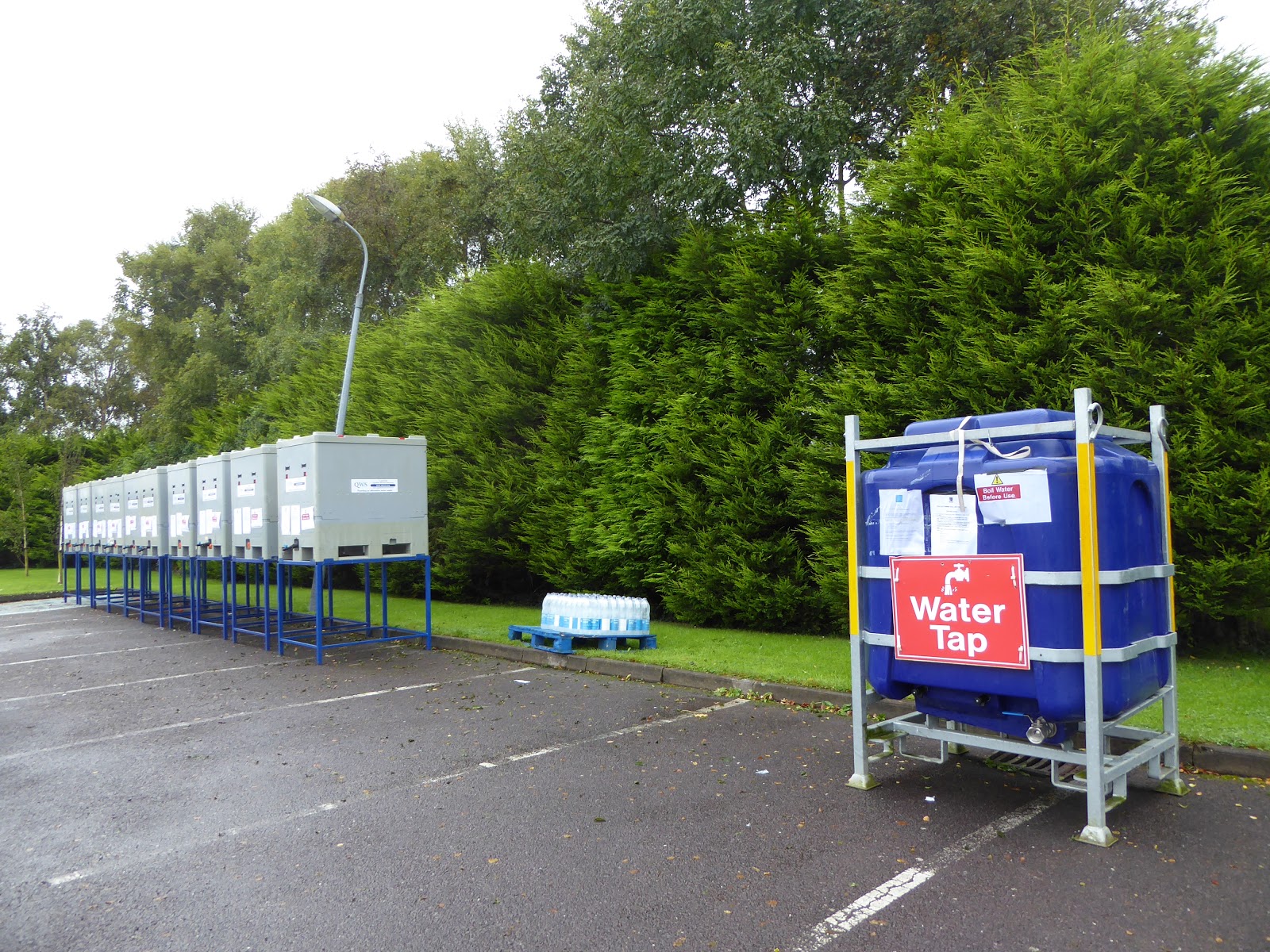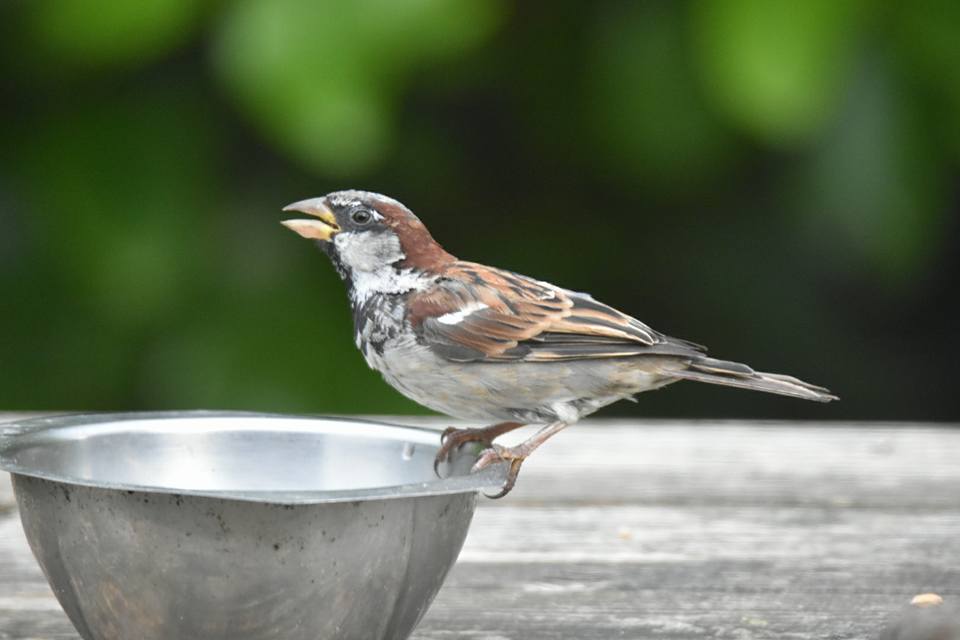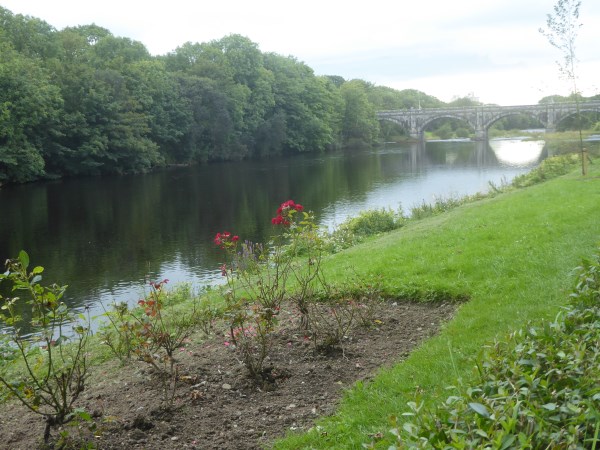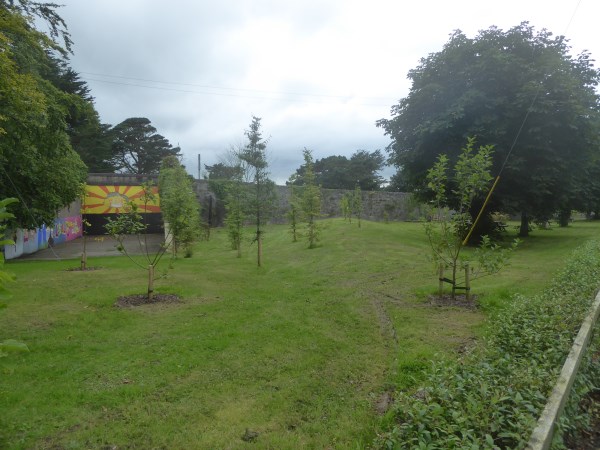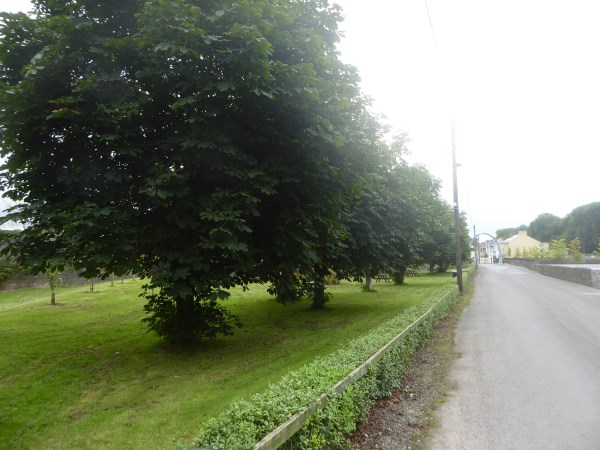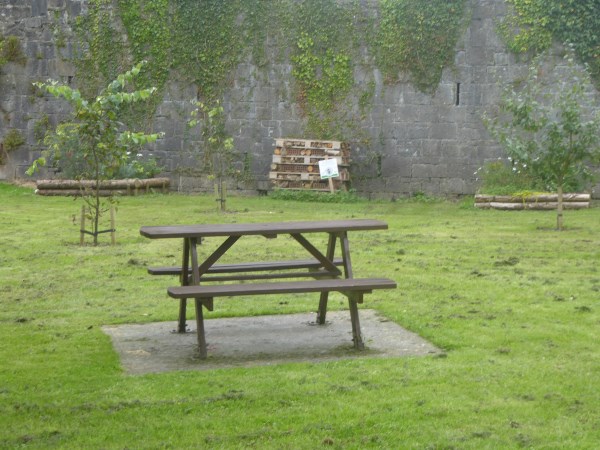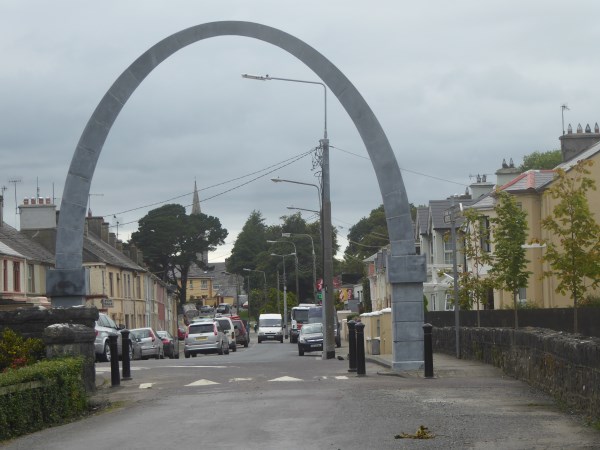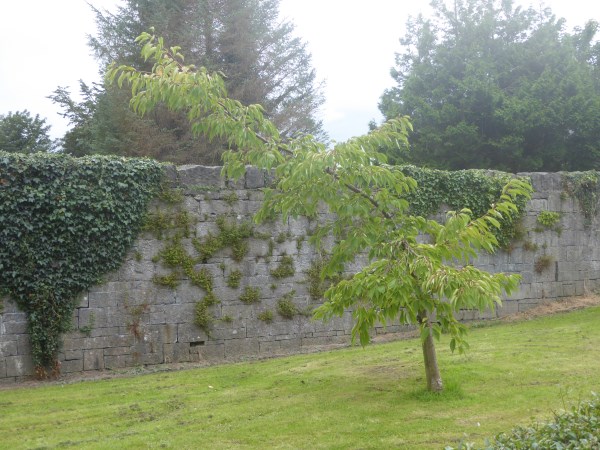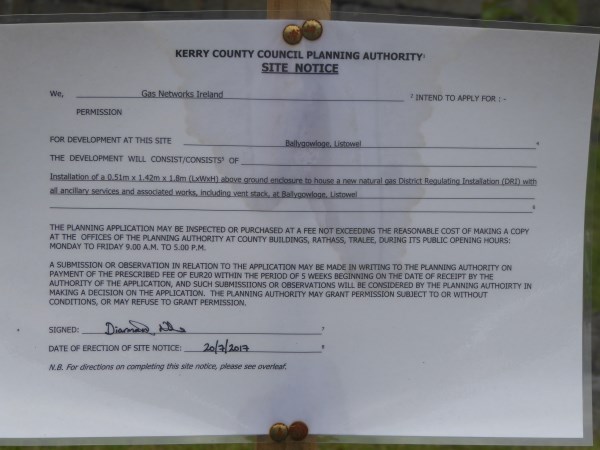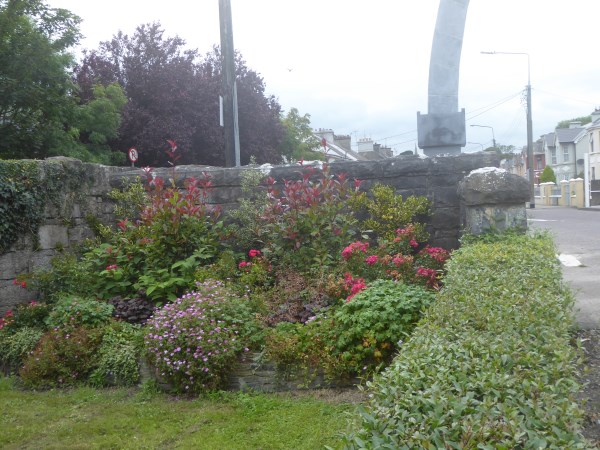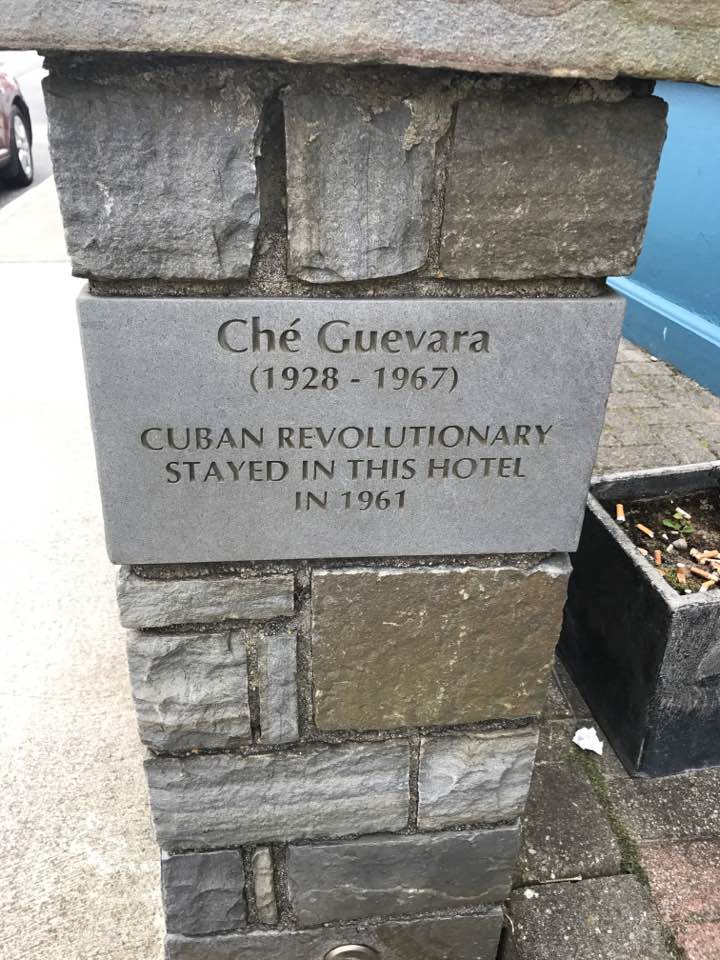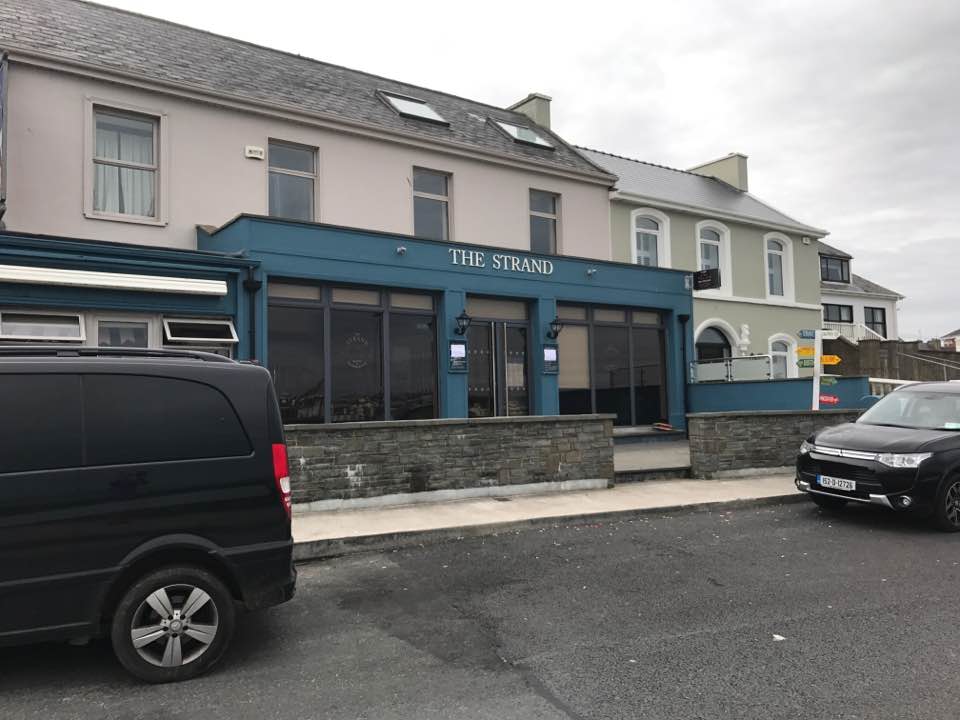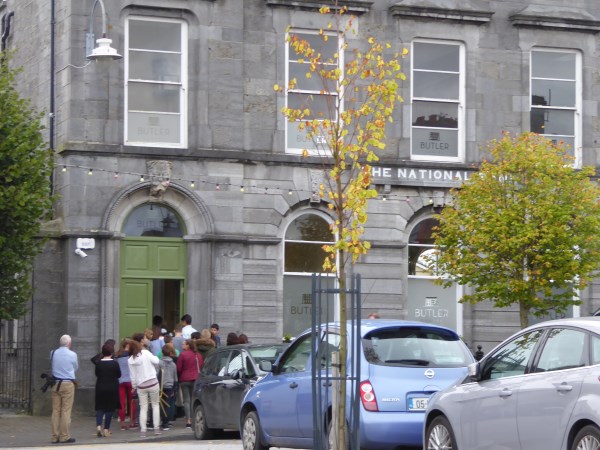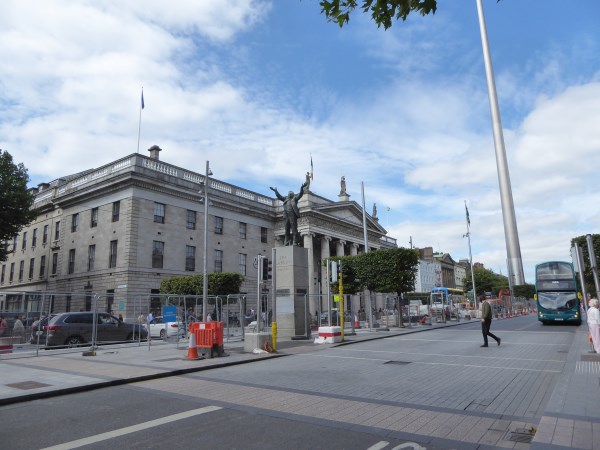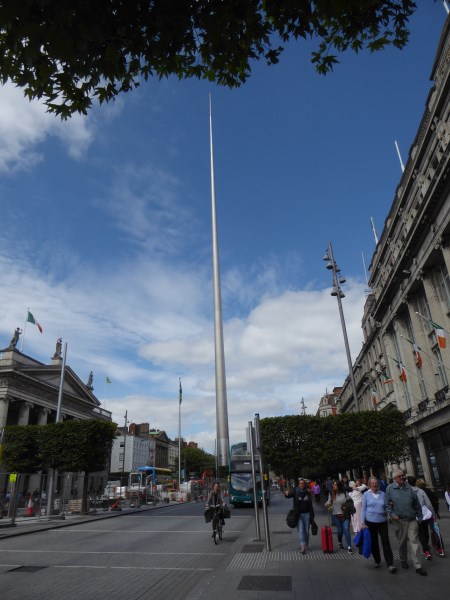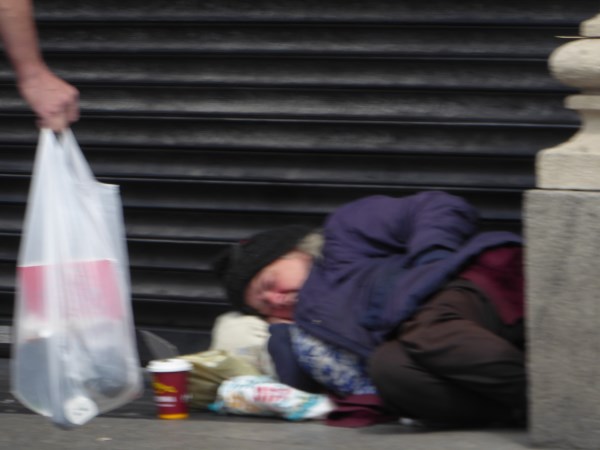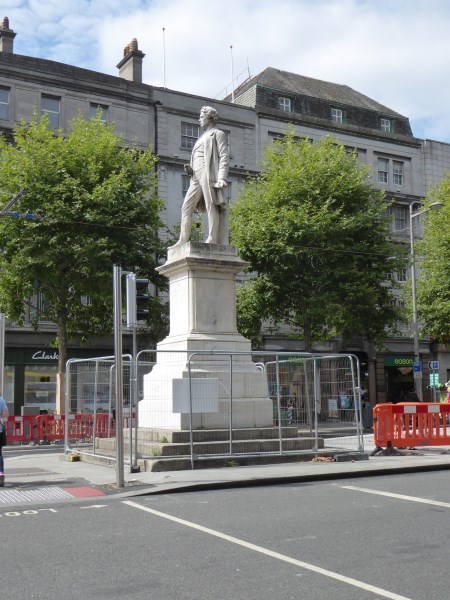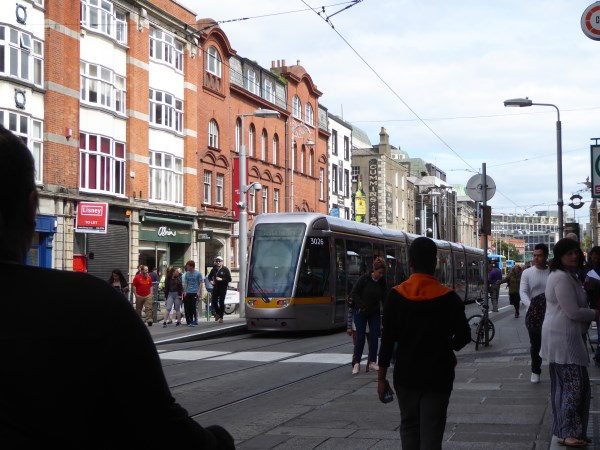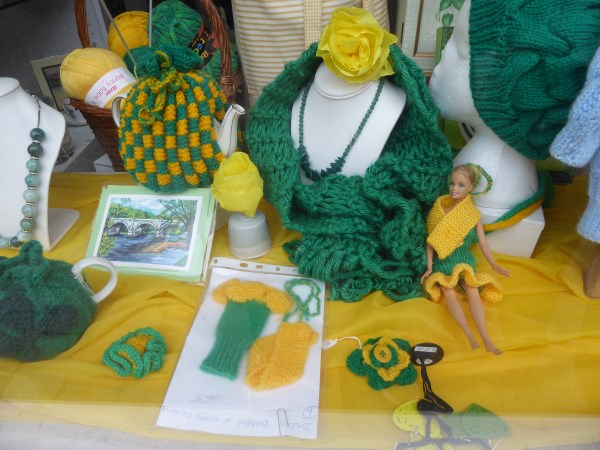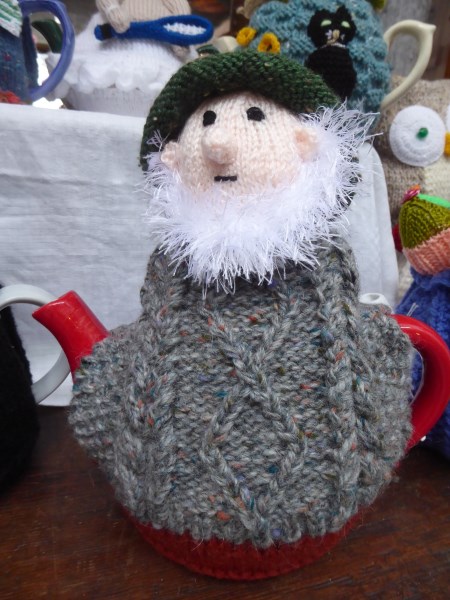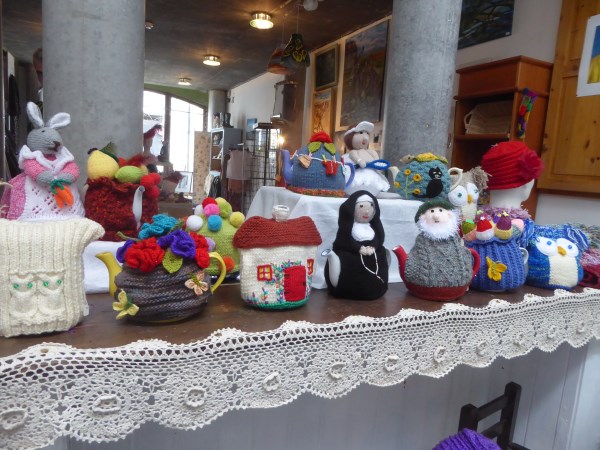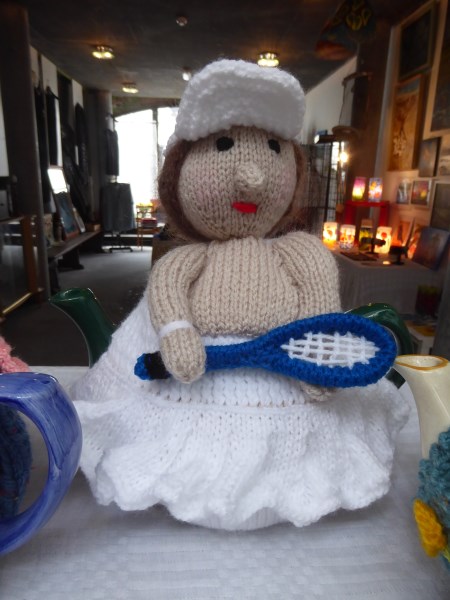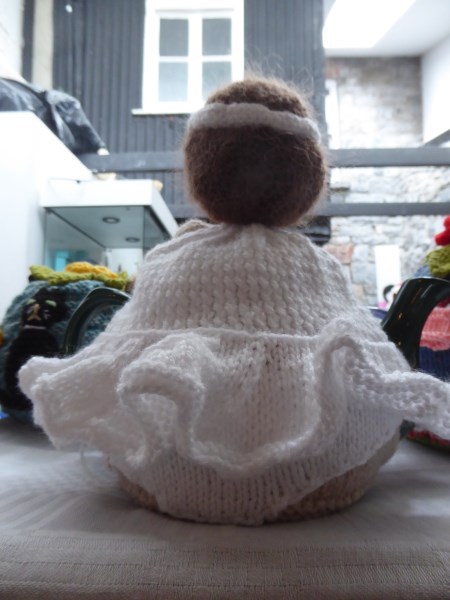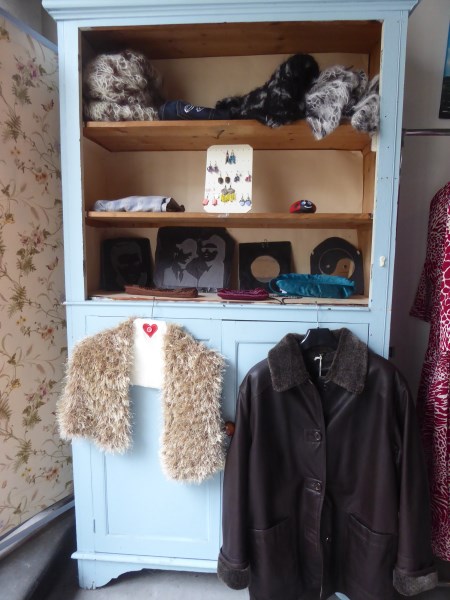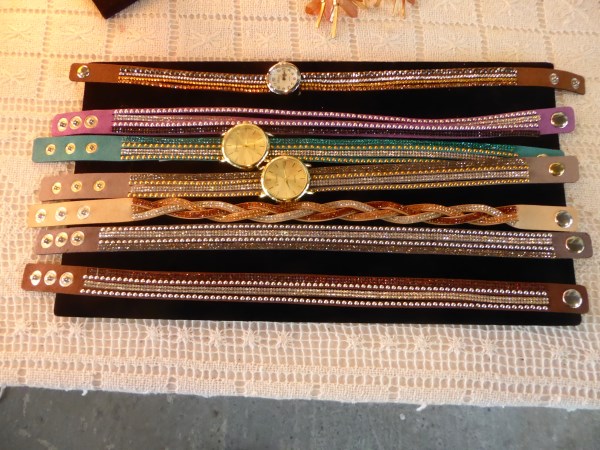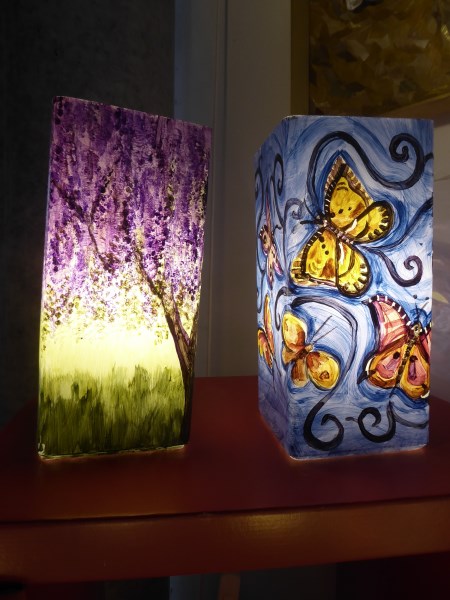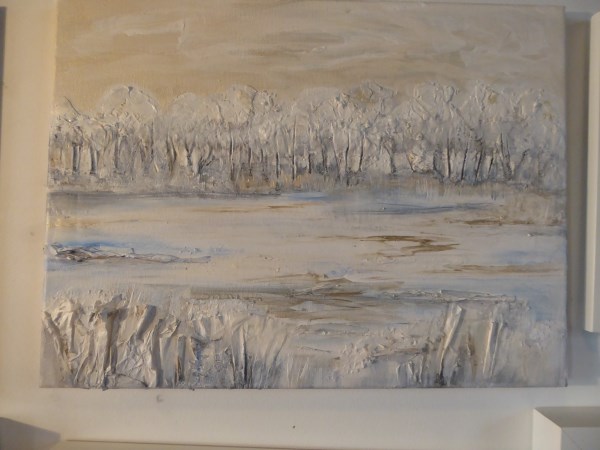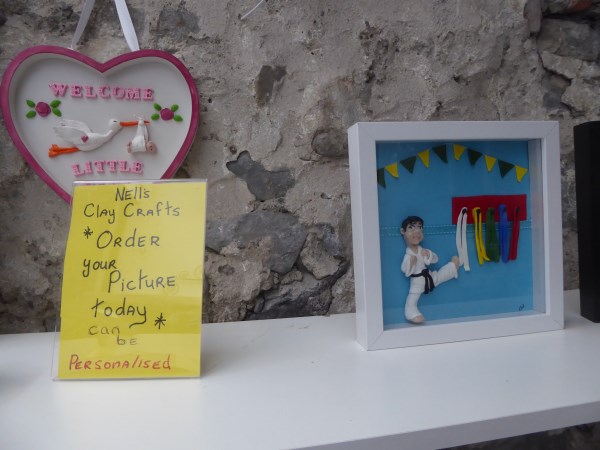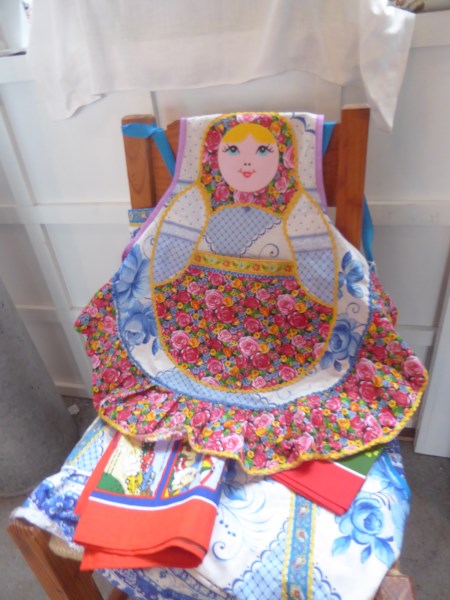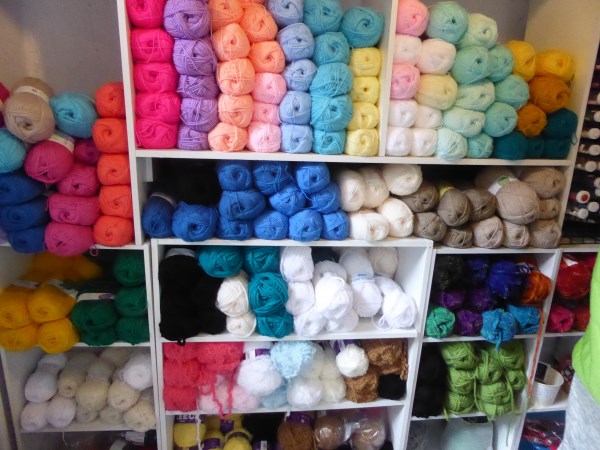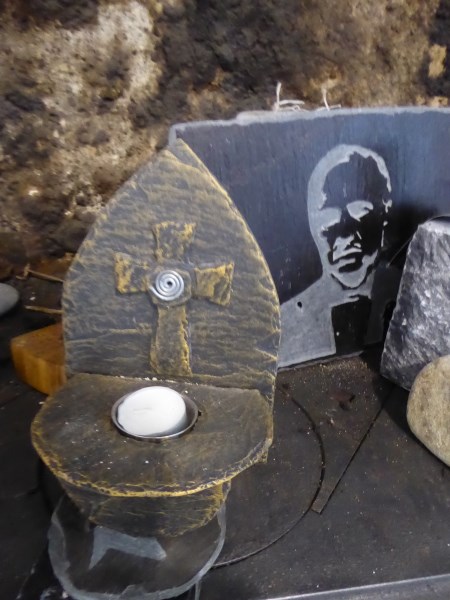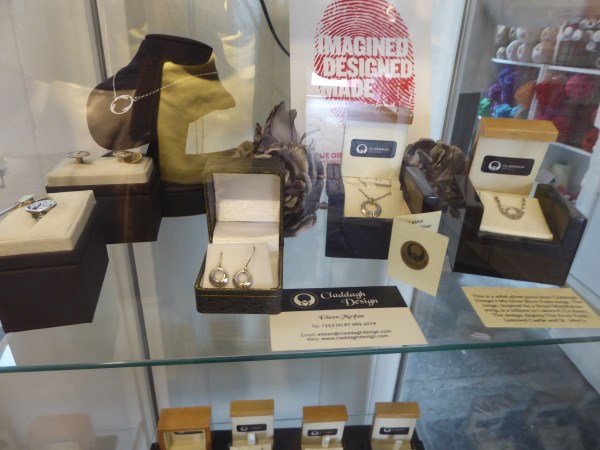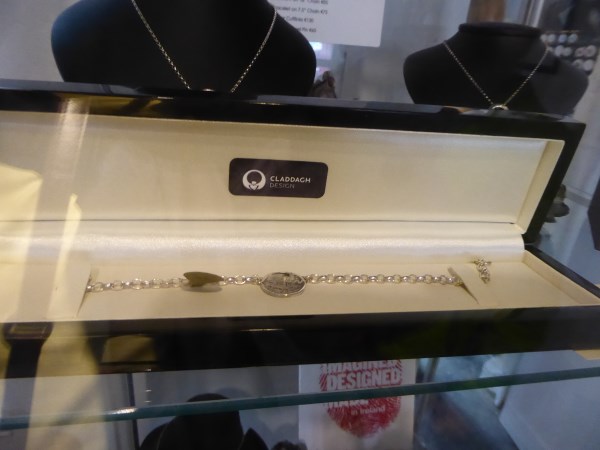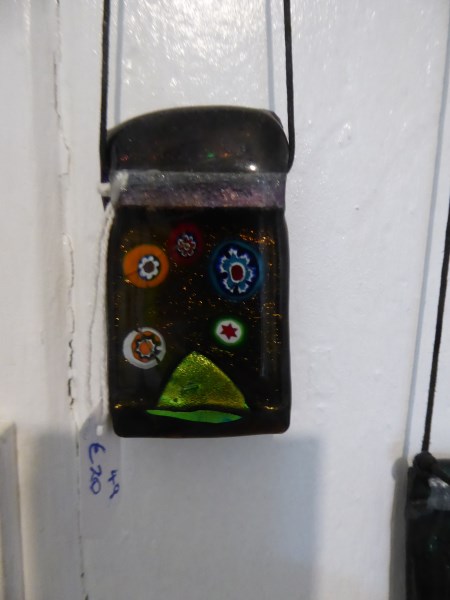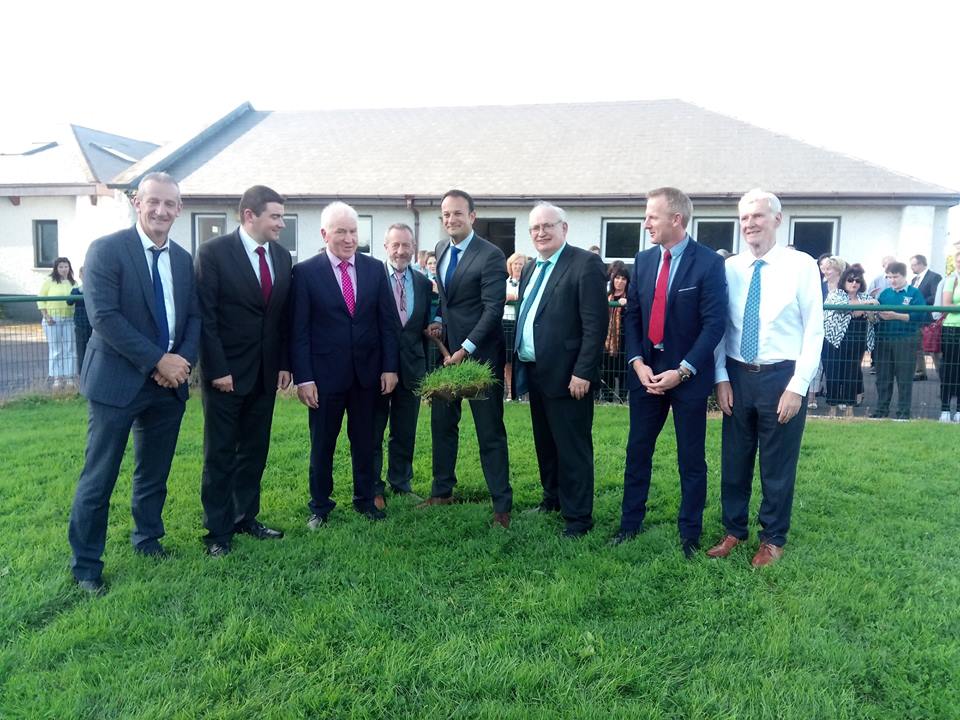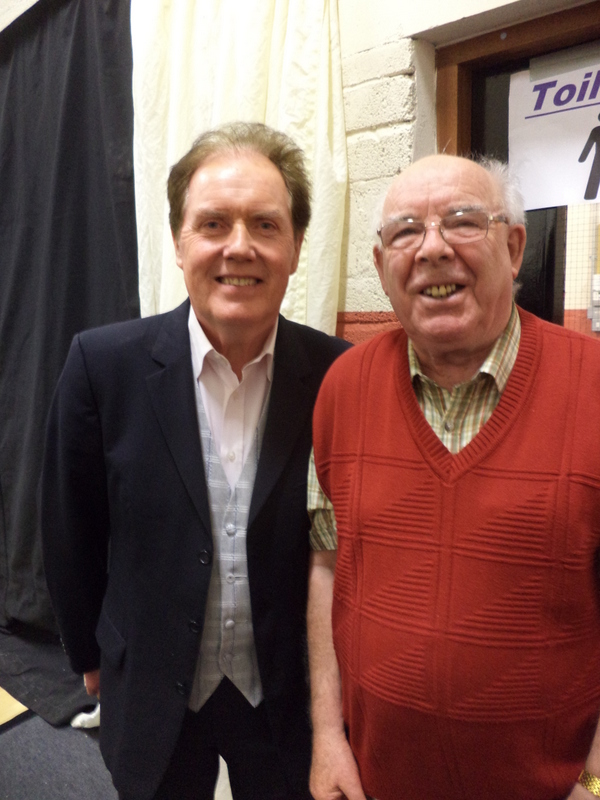
Photo: Chris Grayson
<<<<<<<<
My Good Friends, Jim and Nora Sheahan

Nora Sheahan and her son Noel and family with Sarah Marince in The Seanchaí recently

Jim and Nora Sheahan in their cosy welcoming home
On a recent visit I encouraged Jim to tell me his memories of a different era in Listowel
Jim remembers the
days of the dancehalls. Small local
dancehalls were dotted around North Kerry in the 1940s and 50s. These were the
main venues for entertainment until the advent of the big ballrooms and the
easy availability of transport meant the people went dancing outside their
local area.
There were two
dancehalls in town, Walshe’s Ballroom and The Plaza. The Plaza which was built
by Frankie Chute was a cinema but it held dances on big occasions like the
Races.
Walshe’s Ballroom
was first located upstairs in a premises in William Street. Sunday night was
dance night and older people remember long queues of young people waiting for
this hall to open.
When this hall had
to close when the floor collapsed, Vincent Walshe moved operations to a site he
owned opposite the Astor Cinema. He built a big luxurious state -of -the -art
ballroom with a sprung maple floor, a mineral bar and a cloakroom.
The Las Vegas, as
it was called had a mineral bar, with “catering by Diana.” The Diana in
question was Diana McElligott.
The cloakroom was
another luxury you didn’t have in the smaller crossroads halls. For a small fee
you could leave your coat in safekeeping for the duration of the dance. You
handed in your coat and the cloakroom attendant attached a ticket to the coat
and you were given the corresponding ticket stub. If you had no pocket you had
to keep the stub safely in your shoe until you came to collect your coat at the
end of the dance.
The Las Vegas also
had a resident band. Bunny Dalton was the band master. Jim Sheahan played the
saxophone with this band for 5 or 6 years. Other members of the band were Jerry
Scanlon, Mai Chute, who played the piano, John Moore of Mountcoal who played
the saxophone and Jerry Barry on
trumpet. Tim O’Sullivan was Jim’s music teacher. For 1 shilling a lesson he
taught him to play the fiddle. Tim also played the saxophone and he spotted
Jim’s potential. Jim was already playing the tin whistle and the skills
transferred to the saxaphone as the notes were the same. Since he neither drank
nor smoked he had plenty of lung power and he took to his new instrument with
enthusiasm. At one stage the band had a
vocalist, Johnny Cahill. This is the same Johnny Cahill who played Carthalawn
in the first production of Sive.
This was the era
of the big band and Vincent Walshe put together a band to rival the best in the
land. Bunny Dalton and his band played for the dancing on Wednesday and Sunday
nights. Occasionally, Vincent Walshe brought big names like Mick Delahunty and
Brendan Boyer to town. These were known as “all night dances’ and they went on
until 3.00 a.m. The big band would take a half hour break from 12.00 to 12.30
and the house band would play during this half hour.
People came from
far and near to the dances. Many of them came on foot or by bicycle. If patrons
were lucky enough to have a car there was ample parking in the vicinity of the
hall.
There were no
dances during Lent and local drama groups like Danny O’Donoghue of Lixnaw used
to put on plays in the hall.
Jim remembers
earning 30 shillings a night as a musician. This was good money in those days.
Occasionally the
band would play in other local halls. The Walshe’s had a van for carrying the instruments.
Most halls had a piano and if they didn’t Mai Fitz had her own piano accordion,
which she brought with her.
Jim remembers
great meals after dances in Hennesseys in Ballyduff and Doyle’s in Ballyheigue
or in Hegartys. Dancehalls in those days were often built adjacent to the
owner’s house.
This were the days!
<<<<<<<
Edel Quinn and Tralee

I come from Kanturk which is the hometown of Edel Quinn. Only last week I spotted this plaque on a wall in Tralee. I learned that she lived and went to school in Tralee.
<<<<<<<<
The Longed For Week has arrived



Very soon the gate will open and the bridge will be thronged with people. Races 2017 is on our doorstep.

